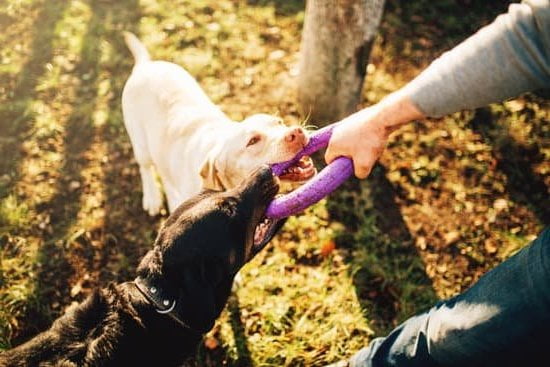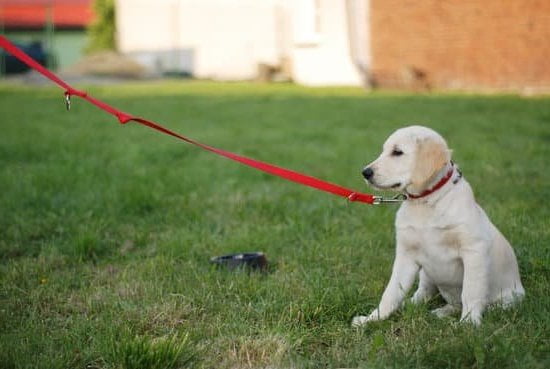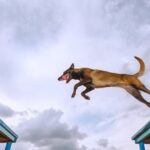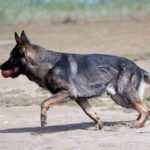Dogs have played an integral role in disaster response efforts, showcasing their unique abilities to locate survivors, provide emotional support, and contribute to search and rescue operations. This article delves into the training process that prepares these four-legged heroes for high-stress environments such as natural disasters and acts of terrorism. From the selection process to specialized training techniques, we will explore how dogs are prepared to handle events like 9/11.
The selection process for training disaster response dogs is a meticulous one, involving the identification and careful choosing of canines with the right temperament, physical attributes, and instinctual drive. Once selected, these dogs undergo rigorous training to prepare them for the challenging tasks they will face in disaster situations. They are trained to navigate through debris, locate survivors, and provide essential emotional support in times of crisis.
Scent detection is a crucial aspect of their training, as dogs must be able to locate and identify human scent among the chaos of a disaster site. Their keen sense of smell allows them to detect even the faintest traces of human presence, making them invaluable assets in search and rescue operations.
Additionally, therapy dogs play a vital role in providing comfort to both victims and first responders during times of distress. Through ongoing training and support, these canine heroes continue to make a lasting impact on disaster response efforts worldwide.
The Selection Process
Another important factor in the selection process is the physical capabilities of the dog. They must be agile, strong, and have good endurance to withstand the demands of search and rescue missions. Additionally, their sense of smell plays a vital role in their ability to locate survivors under debris, so dogs with a strong sense of scent are preferred for this type of training.
Many search and rescue teams also consider the breed of the dog when making selections. Breeds such as Labrador Retrievers, German Shepherds, and Belgian Malinois are commonly chosen for their intelligence, trainability, and natural instincts. While breed alone does not determine a dog’s suitability for disaster response training, it can certainly play a role in the selection process.
| Selection Criteria | Description |
|---|---|
| Temperament | Calm, adaptable, sociable in high-stress situations |
| Physical Capabilities | Agile, strong, good endurance |
| Sense of Smell | Strong scent detection abilities important for locating survivors |
| Breed | Commonly chosen breeds include Labrador Retrievers, German Shepherds, Belgian Malinois |
Specialized Training
Dogs trained to handle events like 9/11 undergo a rigorous and specialized training process to prepare them for high-stress environments. These canines are carefully selected based on specific criteria and then go through intensive training to develop their search and rescue skills, scent detection abilities, and emotional support capacity.
The selection process for dogs trained in disaster response involves identifying traits such as strong work ethic, intelligence, agility, and a calm temperament. These qualities are essential for dogs that will be working in challenging and unpredictable situations. Once selected, the training process begins with basic obedience and socialization, laying the foundation for more advanced skills.
One key aspect of specialized training for disaster response dogs is acclimating them to high-stress environments. This involves exposing the dogs to various sensory stimuli, loud noises, unstable surfaces, and confined spaces. They are taught to remain focused and responsive amidst chaos and distractions. Additionally, these canines undergo extensive physical conditioning to ensure they have the stamina and endurance required for search and rescue missions in disaster scenarios.
| Training Aspect | Description |
|---|---|
| Scent Detection | Dogs are trained to identify human scent even in challenging conditions such as collapsed buildings or rubble. |
| Search Techniques | Canines learn how to navigate through debris, climb over obstacles, and locate survivors during search and rescue missions. |
| Emotional Support Training | Therapy dogs receive specialized training to provide comfort and emotional support to victims and first responders in distressing situations. |
Scent Detection
Utilizing a Dog’s Olfactory Abilities
Dogs have an incredibly keen sense of smell, which makes them valuable assets in disaster response efforts. The olfactory abilities of dogs are harnessed through specialized training to detect the scent of humans, even in high-stress and chaotic environments.
Training Methods
The training process for scent detection begins with basic obedience and socialization. Once these foundational skills are established, dogs are introduced to specific scents associated with human presence. Through positive reinforcement techniques such as clicker training and rewards, dogs learn to associate the target scent with a reward, strengthening their ability to identify and locate human scent in various situations.
Simulated Scenarios
To ensure that dogs are prepared to handle real-life disaster situations, training often involves simulated scenarios that mimic the chaos and challenges they may encounter during a crisis. This includes exposing them to loud noises, unstable surfaces, and confined spaces while still requiring them to focus on locating the target scent amidst the distractions.
The rigorous training process prepares these remarkable animals to play a crucial role in disaster response efforts such as 9/11, where their ability to detect and locate human scent can make a significant difference in search and rescue operations.
Search and Rescue Techniques
When it comes to disaster response, search and rescue efforts are crucial in saving lives and bringing hope to those in need. Dogs play a significant role in this aspect, as they are trained to navigate through debris and locate survivors in the aftermath of a disaster. The training process for search and rescue dogs is rigorous and demanding, requiring specialized skills and an unwavering dedication to their mission.
Specialized Training Process
The training process for search and rescue dogs involves a combination of obedience training, agility training, and exposure to various environmental stimuli. These dogs undergo extensive physical conditioning to ensure they have the stamina and endurance to traverse through challenging terrain and navigate through rubble. Additionally, they are taught advanced search techniques that enable them to cover large areas efficiently while detecting human scent.
Locating Survivors
One of the most critical skills that search and rescue dogs must master is the ability to locate survivors trapped beneath debris. Through repetitive drills and simulations, these dogs are trained to follow scent trails, assess different odors, and accurately pinpoint the location of survivors. Their keen sense of smell allows them to detect trace amounts of human scent even in the most adverse conditions, making them invaluable assets in disaster response efforts.
Real-Life Examples
Countless real-life examples showcase the incredible capabilities of search and rescue dogs in responding to disasters such as 9/11. These heroic canines worked tirelessly alongside first responders, tirelessly searching through the rubble for survivors. Their unwavering determination and life-saving contributions have left an indelible mark on disaster response efforts.
Emotional Support
Therapy dogs play a crucial role in providing emotional support to both victims and first responders in the aftermath of a disaster. These specially trained dogs are able to provide comfort, relief, and a sense of calm to those who have been affected by traumatic events like 9/11. The bond between humans and dogs has long been recognized for its therapeutic benefits, and therapy dogs are specifically trained to bring these benefits to individuals during times of crisis.
The training process for therapy dogs involves not only obedience and socialization skills but also specific techniques for providing emotional support. This includes teaching the dog to remain calm in chaotic environments, respond appropriately to stress signals from humans, and maintain a gentle and comforting presence. Additionally, therapy dogs undergo extensive socialization to ensure that they are comfortable interacting with people of all ages and backgrounds.
To provide comfort after a disaster like 9/11, therapy dogs are brought into affected areas where they can interact with victims and first responders. They offer unconditional love, warmth, and non-judgmental companionship, which can help alleviate stress, anxiety, and trauma. Additionally, the presence of therapy dogs has been shown to reduce blood pressure, heart rate, and feelings of loneliness or isolation in both individuals directly impacted by the disaster as well as those working tirelessly in response efforts.
- Therapy dogs undergo special training focused on providing emotional support
- Their role is not only to comfort victims but also provide relief for first responders
- Interacting with therapy dogs has been shown to have positive physiological effects on individuals such as reducing blood pressure
Real-Life Examples
Dogs have played a crucial role in disaster response efforts, including the events of 9/11. Their ability to navigate through debris, locate survivors, and provide emotional support has made them invaluable assets in times of crisis. Here are some real-life examples of dogs who made a significant impact during disaster response efforts, particularly during 9/11.
- Bretagne: Bretagne was a golden retriever who was part of the Texas Task Force 1 urban search and rescue team. She and her handler traveled to Ground Zero to help with search and rescue efforts. Bretagne worked tirelessly alongside other search and rescue teams to locate survivors in the aftermath of the attacks.
- Trakr: Trakr, a German Shepherd K-9 police dog, was credited with finding the last survivor in the rubble of the World Trade Center. His keen sense of smell and determination helped him locate Genelle Guzman-McMillan, who had been trapped under the debris for 27 hours. Trakr’s heroic actions brought hope and relief during a devastating time.
- Salty and Roselle: Salty and Roselle were both guide dogs for their owners, but they also played crucial roles in assisting their owners and others during the evacuation of the World Trade Center on September 11th. Their calm demeanor and ability to follow commands even in chaotic situations helped ensure the safety of those around them.
These stories highlight just how important dogs have been in disaster response efforts, including their involvement in events like 9/11. Their training and dedication have saved countless lives and provided comfort to those affected by tragedy. The impact of these canine heroes continues to be felt long after the initial response efforts have ended.
Ongoing Training and Support
After the initial training process, it is crucial for search and rescue dogs to receive ongoing training and support to ensure they remain prepared for future disaster events. This ongoing training is essential to maintain their skills, keep them in top physical condition, and familiarize them with new environments and scenarios. But how exactly are these dogs continuously trained and cared for to ensure their readiness for future events?
One of the key aspects of ongoing training for disaster response dogs is regular reinforcement of their search and rescue techniques. This includes practicing navigating through debris, locating survivors, and effectively communicating with their handlers. Additionally, dogs undergo regular scent detection training to ensure they can still locate and identify human scent in various disaster situations. Ongoing practice helps these canines stay sharp and ready to respond at a moment’s notice.
In addition to skill maintenance, continuous care is vital for the overall well-being of these working dogs. They receive regular veterinary check-ups, proper nutrition, physical conditioning exercises, and mental stimulation to keep them healthy and happy. This holistic approach to caring for search and rescue dogs ensures that they are not only physically able but also mentally prepared for the rigors of disaster response work.
Furthermore, ongoing training also involves exposure to different environments and scenarios to acclimate the dogs to a variety of situations they may encounter during an actual disaster event. By regularly simulating different scenarios – such as collapsed structures or natural disasters – handlers can assess the dog’s reactions and adapt their training as needed. This level of preparation ensures that these highly skilled animals are always ready to handle the unpredictable nature of disaster response efforts.
Impacts and Outcomes
In conclusion, the role of dogs in disaster response efforts is invaluable, and their impact extends far beyond their immediate actions. Through careful selection, specialized training, and ongoing support, these canines are able to provide crucial assistance in high-stress environments such as natural disasters or terrorist attacks. Their ability to locate survivors, provide emotional support, and aid in scent detection has saved countless lives and provided comfort to those in need.
The lasting effects of canine involvement in disaster response efforts are evident not only in the immediate aftermath of an event but also in the long-term recovery process. The bond between search and rescue dogs and their handlers is a testament to the dedication and trust that develops through rigorous training and real-life experiences. Additionally, therapy dogs offer emotional support not only to victims but also to first responders who often face trauma while working in hazardous environments.
As we continue to explore the impacts and outcomes of canine involvement in disaster response efforts, it’s important to recognize the ongoing training and care that these dogs receive. Their readiness for future events depends on continuous training and support, ensuring that they remain well-prepared for any situation that may arise. Through their unwavering dedication and resilience, these canines have proven time and again that they are indispensable members of disaster response teams around the world.
Frequently Asked Questions
How Were Dogs Used in 9 11?
Dogs played a crucial role in the search and rescue efforts following the 9/11 attacks. They were used to search for survivors in the rubble, locate human remains, and provide comfort to first responders and victims’ families.
Were Search and Rescue Dogs Depressed After 9 11?
It was reported that some search and rescue dogs showed signs of distress and depression after working at Ground Zero. The devastation and loss they experienced alongside their handlers took a toll on their mental health, leading to symptoms of depression.
How Many Dogs Were Used on 9 11?
Around 300 search and rescue dogs were deployed to the World Trade Center site in the aftermath of 9/11. These specially trained canines worked tirelessly alongside firefighters, police officers, and other first responders in the recovery mission, demonstrating their unwavering dedication and loyalty.

Welcome to the blog! I am a professional dog trainer and have been working with dogs for many years. In this blog, I will be discussing various topics related to dog training, including tips, tricks, and advice. I hope you find this information helpful and informative. Thanks for reading!





